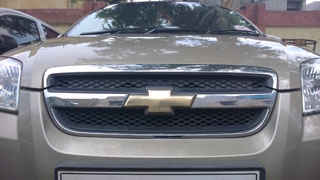China’s technological and military rise is not a fluke, but a meticulous strategy since 1980s, of usurping US leadership globally, while stifling India’s growth. Lack of long term vision in both, abetted its intent. The repeated western black swan events of dot com bust, 9/11 attacks and 2008 meltdown were all seized as opportunities by China.
To execute its game plan, China created two tiers of relationships. Tactical alliances with Russia, Israel and Iran to fuel its ambition and a strategic friendship with Pakistan, Myanmar and Bangladesh to ring fence and keep India preoccupied.
China-Russia tactical alliance began in 1949 with USSR providing China defence equipment, technologies and scientists to help build communist capabilities. China began to reverse engineer all its purchases. After the Sino-Soviet relationship soured, US and Europeans sold it arms in early 80s, to keep Soviets at bay. To keep its arsenal updated, China bought Soviet aircrafts and other weapons from its former ally, Egypt. In return, Egypt got cloned Chinese military spares to maintain Soviet equipment.
Simultaneously, China’s began arming both Iran and Iraq for their 1980-88 war. A US Congress study estimates that China sold over $8billion(bn) of arms to both between 1980-87. However, the 1991 Gulf War exposed the weakness of China’s cloned armoury, when it failed against western arms. This fuelled China’s appetite for western war technologies by means, fair or foul.
Luckily for China, the western arms embargo, post Tiananmen incident, was succeeded by Soviet breakup. From 1992-1994, China bought nearly $6bn of Russian arms on distress prices and barter terms. Its wide arsenal of purchases included combat aircrafts and helicopters, mobile air defence systems, aircraft carriers, submarines, guided missile destroyers and a wide range of missiles. China’s defence spine rests on its unique technological ability to copy, marry and improve upon weapons of Russian, American and EU origin competently.
In 1998, a Hong Kong businessman reportedly paid $20 million to Ukraine shipyard for a 70% completed, most advanced Soviet aircraft carrier, equipped with state of the art engines, for a floating casino. This by 2011, became China’s first aircraft carrier Liaoning. Chinese cloning capabilities were displayed when it cancelled a 1996 contract for 200 Russian CSu-27 war planes and announced its own cheaper version J11B, by 2007. Similarly, Russian S-300 missile system became HQ-9. The IP head of Government’s defence company Rostec complains that China has reverse engineered over 500 of Russia’s most advanced arms technologies.
Yet Russia cannot seriously reprimand China, as it has always financially bailed it out, especially after Ukraine crisis. China, as Russia’s largest, $110bn bilateral trade partner, has promised to double it by 2024.
Therefore, India’s defence dependence on Russia is inimical to its long-term security interests.
China-Israel tactical covert alliance began in 1979 to access western technologies, via Israel. Israel admits having transferred over 60 defence technologies to China. Sunday Times reported that in 1987, Israeli military scientists were caught in Hong Kong, travelling on false passports to transfer missile technology to China. In 1988, Washington Post exposed how Israel abetted China, to produce US linked sea-launched missile. Israel has guided Chinese arms industry into technical manhood, helping it to marry diverse cloned processes into effective weapon systems. In 1993, CIA Director revealed that Israel, even without diplomatic relations, had been selling advanced US related defence technologies to China, violating its sanctions. US govt. sources discovered that its technology for shelved joint US Israeli jet fighter ‘Lavi’, became China’s warplane. In 2000, US vetoed Israeli supply of Phalcon AWACS, despite Israeli lobbying with US. China was sold Harpy Unmanned Aerial Vehicle(UAV) technology by Israel, in 1990s. Today it controls 70% of the global UAV market.
A US Govt. report shows that Saudi Arabia procured Israeli CSS2-class nuclear missiles through China. These were secretly operationalised by Israeli scientists in Saudi in 80s. Pakistan was rumoured to later arm them with nuclear heads. That led to the proximity between Riyadh and Pakistan that resulted in Wahhabi terror funding against India. Saudi defence minister, in 1999 visited Kahuta, Pakistan’s nuclear and China supported missile production facility. China has also supplied US- Israeli linked military hardware to Riyadh, ballistic missiles to Qatar and armed drones to UAE.
China’s $12bn plus investment in Israeli industry and key infrastructure projects, including Chinese state investments in sensitive Israeli technology sectors, remain a US heartburn. Four major Chinese funded infra projects include expansion of Israel’s largest military and US naval fleet base and joint military exercises port, Haifa. From 2021, for next 25 years Haifa port will be managed by China. China’s presence in Haifa with its proven track record in cyber espionage should give US sleepless nights.
Israel, despite US pressure, was a founding member of Chinese sponsored AII Bank, created to eclipse US driven World Bank and IMF. Increasing China-Israeli ties should worry India and USA.
China-Iran tactical alliance began due to common aversion to US hegemony. From 1985 to 1996, China fathered Iran’s nuclear programme; providing it with critical nuclear designs, technology and machinery. Iran’s uranium exploration, mining and use of lasers for uranium enrichment was China driven (Nuclear Threat Initiative, 03). It supplied Iran with diverse military hardware and aided their manufacturing of arms including tactical missiles, anti-ship mines and fast boats (Rand 2020). China also established roots of Iran’s oil refining self-sufficiency.
China in 2019 committed, under BRI, investments of $280bn in developing Iran’s oil, gas and petrochemicals sectors and another $120bn for updating Iranian infrastructure by building 100 projects including airports, high speed railway and free trade zones. Huawei will provide Iran with 5G networks. 5,000 Chinese security personnel stationed in Iran, will protect China’s investments. In return, China gets over 30% price discount on oil with 2 years’ payment terms in soft currencies. Iran, in return gets China and its ally Russia’s veto insurance against any UN sanctions.
Chinese entrenchment in Iran should cause both USA and India, deep anxiety.
Since 2008, over 60% of China’s defence exports have been to Pakistan, Myanmar and Bangladesh.
China-Pakistan strategic friendship began in 1959, after Khrushchev supported India against China, during a border spat. Karakoram highway till Aksai Chin, demarcation of a common border in 1961, Pakistan’s 1962 support for China’s seat in UN followed by China gaining 13,000 sq. miles of glacier border lands from Pakistan glued the bond. (Kashmir’s Untold Story, Malhotra & Raza)
Beijing, to checkmate India’s growth, has armed Pakistan with nuclear weapons in 1980 and nuclear missiles in 1990, despite existing US sanctions. Pakistan, has brokered for China’s enhanced influence in Muslim middle east, while providing China an access to and oil pipeline route to Arabian Sea. China is also Pakistan’s military bank to keep engaging India through border skirmishes and terror.
China is co-producing with Pakistan, JF-17, a morphed, $15 million version, of US F-16 and MIG-21 aircrafts with Russian engines. China has helped Pakistan to export these to Myanmar and Nigeria. Pakistan manufactures a wider range of Chinese licenced military equipment. Pakistan is soon acquiring China’s most advanced guided missile combat frigate. To counter India’s missile Agni-V, Beijing equipped Pakistan with nuclear missiles with multiple warheads. China is arming Pakistan’s navy with eight new submarines; four each will be built in China and Karachi shipyards.
China has roped in Russia for a tripartite axis with Pakistan, to push American dominance out of Arabian Sea. Russia sold Pakistan Mi-35M assault helicopters in 2015 and another $9bn of Russian arms are under negotiation. China has promised $60bn for China-Pakistan Economic Corridor in 2015 and is helping construct its dams, trunk, rail infrastructure and energy projects.
China nurtures Pakistan to become a low-cost defence manufacturing hub to checkmate and disrupt India’s growth story.
China- Myanmar strategic friendship began in 1989 due to arms trade and training for weapons and combat. Over $21bn of approved Chinese FDI supports Myanmar jobs, while its insurgents have engaged India’s borders. China has secured access to Myanmar’s Indian Ocean naval bases, through a radar installation on Coco islands adjoining Indian base in Andaman. China has built a strategic Myanmar port, an alternate oil route to US dominated Malacca straits, for a pipeline to Chinese mainland.
Bangladesh’s admission into UN, as a new nation, was twice vetoed against by China. Yet, China-Bangladesh strategic friendship comes from its location on Indian Ocean. China is its biggest trade partner since 2015. Bangladesh as a BRI signatory, has benefitted from a $38bn Chinese investment. In 2017, two Chinese submarines were sold to Bangladesh for a friendship price of $100 million each. Bangladesh accounts for 20% of China’s arms sales, as its biggest customer. China, post India-China recent standoff, announced a total duty exemption for 97% of Bangladesh products. This explains the deafening silence of Bangladesh during the current Indo-China border clash.
Both Myanmar and Bangladesh are China’s eyen on Indian ocean.
China’s military ascendency and current disruptionist stance, close to US elections, is caused by US and EU vulnerability to safeguard their economies from the greed of large corporates and lobbyists.
Despite US global embargo on China, post Tiananmen, sensitive defence companies were either acquired, partnered, compromised by adapting or stealing their designs and technologies for improving or building Chinese defence systems. Rhodium group’s research reveals that between 2000-12 significant Chinese investments were made in US and
EU sensitive technology sectors. EU has been on the forefront of defence transfers under the guise of aerospace exchanges, information technology engagements, collaborations in communication systems and joint cyber tech developments, academic engagements in material sciences and nuclear physics.
Hacking and stealing by Chinese private businesses, through investments, scientists, students, exchange programmes and diplomats has been underway, on a war like scale for many decades to access scientific, technological, medical, financial and chemical warfare research from the west. US Govt. has woken up to the fact that Chinese stole or hacked some of their most critical defence designs and technologies; including missiles, fighter jets, helicopters, warships, cyber and sonic weapons, their software, chemical weapons and medical research. Over a dozen cloud providers like Hewlett Packard and IBM, were hacked by Chinese Government spies to access intellectual property, technical and operations manuals, defence contracts and other data of private defence manufacturers. Today four of China’s arms companies are amongst the world’s top 20, with 3 being in top ten. SIPRI pegs China’s defence spending at over $260bn, 1.5 times its declared budget.
China’s naval power focus is aimed to oust US influence from Asian waters. International Institute of Strategic Studies data reveals that between 2014 and 2018, China’s navy added a bigger fleet than the combined navies of Germany, India, Spain and UK. China now has more operational naval ships than the US.
India-China latest border skirmishes are designed to convert old uninhabited common frontiers between the two, into Chinese borders. Such frontier lands are distinct and abut Indian and Chinese boundries. Decades of Chinese infrastructure investments in Tibet were a precursor to this design. The recent Chinese belligerence in the South China Sea and on India’s borders has exposed both USA and India, as being alone and friendless. India’s jobless consumption economy stuns its combat potential. But for Trump’s hard line ‘America First’ stance, global vulnerability to China would have remained unexposed.
India’s misplaced defence strategy, premised on expectations and commitments from its partners, while retaining its policy autonomy and flexibility, has deeply damaged its security interests.
Its constant prevarication, amidst geopolitical, and strategic upheavals has lost India precious time and alliance opportunities. Now, western leaders and defence companies arrive in Delhi, hawking military wares, while blocking design and tech transfers, to help sustain thousands of their domestic jobs.
India urgently needs, not only advanced land based, aviation and maritime platforms to be procured for building locally, but it also is in dire need of a broad-based, multi sectoral and robust hi-tech manufacturing base with a technology spine consisting of advanced innovations in cyberspace, telecommunications and quantum communications, AI, IoT systems, 3D printing and new materials etc. India must immediately develop and fund a well-planned Military Industrial Complex (MIC), to be in a bargaining position for future technology collaborations and transfers; which would in turn enhance India’s technical skill quotient, while creating millions of jobs with the estimated, future $80bn arms import. DRDO, India’s hopelessly outdated and obtuse war research machine that consumes 20% of India’s R&D budget, conflicts with creation of an effective MIC.
The paradigm of war scape has shifted to engaging with the creators and reacting against inimical electronic intelligence. Invasive stealth capabilities, cyber, sonic and space warfare, artificial intelligence systems, and unmanned aerial attacks have shifted conventional war narrative from ‘feet on ground’ to ‘waves in the skies’. India lost a warplane due to Chinese cyber-attack before Doklam standoff. In such a future of war, India remains out of depth. Windows of opportunities are fast closing, with reducing room to manoeuvre amidst difficult choices of technology barriers and exorbitant prices.
More than the speed of change in technologies, there is the fundamental issue of comprehending and coping with redefined regional and multilateral regulations and standards in defence protocols platforms and equipment amongst allies and opponents. This limits interoperability of operations across platforms. India’s bouquet of different platforms from diverse sources makes their updating and service costly. With faster obsolescence in protocols and platforms, India’s defence budget, trapped in pensions and salaries, restrains its combat or defence potential.
India must immediately assemble an efficient MIC under a unified central command structure, which engages with this maze of shifting technology and platform narratives to create India’s long term security vision. Such MIC must combine India’s strategic interests with high end scientific talent, research and academic institutions, competing state and private defence design institutes, specialised skill enhancement labs backed by advanced production facilities where small and medium enterprises engage with, adapt and innovate futuristic technology partnerships.
America’s election to election policies and quarter to quarter focus has engineered its sudden and mindless withdrawal from Trans Pacific Partnership. This has destabilised Asian security balance while hurting US business interests in the world’s fastest growing market. To protect these very interests, US had lost 100,000 lives and trillions of dollars in three wars in Asia, including two against China in Korea and Vietnam. To retain a market for US products, technologies, defence systems and innovations, in Middle East and Asia, US needs to fashion a regional defence alliance headed by a local heavyweight.
Bound by democracy and economic mutuality, a US and India defence treaty and defence technology engagement is the obvious route to formation of a regional defence alliance, from Suez to Pacific, to checkmate China. The swiftest, deep impact plan would be to structure a joint naval base in Andaman, under quadrilateral security umbrella (QUAD), dominated by US and Indian fleets, while Japan and Australia’s fleets flank and curb Chinese naval enthusiasm. This will immediately restore global confidence in US commitment to thwart China, while a joint trade snub by EU and QUAD will hurt China’s economic gut. Only then can its communist party reconsider both, its current global combativeness and its current party’s leadership at its 100th founding anniversary, next year.
DISCLAIMER : Views expressed above are the author's own.

























































Join the debate
Add your comment